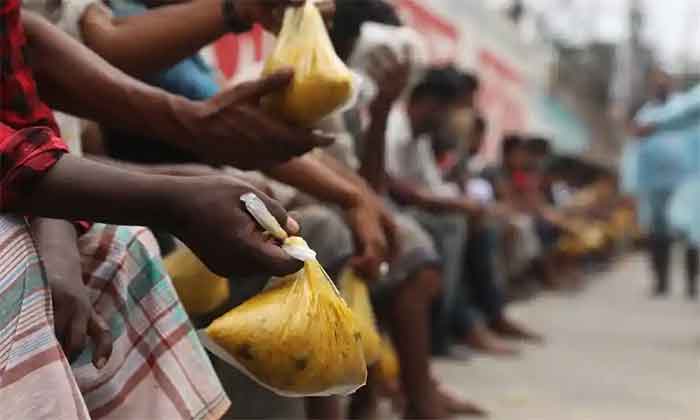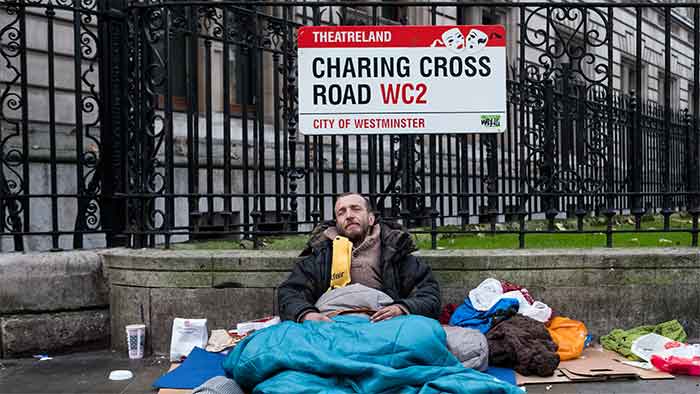
While a drift towards increasing inequality is by itself very harmful for a country which already has high levels of poverty and deprivation, this situation has been worsened further in some countries by increasing dominance of billionaires and the extremely extra-ordinary increase of their wealth within a short time, particularly since the advent of the pandemic. At world level, India is increasingly being mentioned as the leading example of such trends.
There is something deeply disturbing about both poverty at the bottom and plenty at the top growing rapidly at the same time. Yet this is precisely what seems to have happened in many countries of world in pandemic times. Oxfam India’s new Inequality Report released on January 17 2022 has highlighted that in India while 84 per cent of households suffered a decline in their income in a year marked by tremendous loss of life and livelihoods, the number of Indian billionaires grew from 102 to 142 and the collective wealth of India’s 100 richest people hit a record high of INR 57.3 lakh crore (USD 775 billion) in 2021. What is more, the report points out, about one-fifth of the increase in the rise of the richest 100 families was accounted for by the very fast pace of the wealth of a single business house—the Adanis of Gautam Adani fame—whose net worth and wealth increased by several times since the advent of the pandemic.
The Oxfam report shows how precious human lives are being lost due to escalaing inequality. Summarising the shocking global-level data its CEO Amitabh Behar said, “Oxfam’s global briefing points to the stark reality of inequality contributing to the death of at least 21,000 people each day, or one person every four seconds.”
In India, during the pandemic (since March 2020, through to November 30th, 2021) the wealth of billionaires increased from INR 23.14 lakh crore (USD 313 billion) to INR 53.16 lakh crore (USD 719 billion). More than 4.6 crore (one crore=10 million) Indians meanwhile are estimated to have fallen into extreme poverty in 2020 (nearly half of the global new poor according to the United Nations.) The stark wealth inequality in India, Oxfam says, is a result of an economic system rigged in favour of the super-rich over the poor and marginalised.
Oxfam has placed much hope on fiscal policy for correcting inequalities, recommending a one percent surcharge on the richest 10 percent of the Indian population to fund inequality combating measures such as higher investments in school education, universal healthcare, and social security benefits like maternity leaves, paid leaves and pension for all Indians.
Its recommdations include more reliance on indirectly reducing direct taxes than on indirect taxes.
In reality indirect tax as a share of the Union government revenue have been increasing at a time when there is a decline in the proportion of corporate tax for the same in last four years. The additional tax imposed on fuel has risen 33 percent in the first six months of 2020-21 as compared to last year and is 79 percent more than pre-Covid levels.
At the same time, the Oxfam report remids us, the wealth tax for the super-rich has been abolished in 2016. Corporate taxes were lowered from 30 percent to 22 percent to attract investment last year has resulted in a loss of INR 1.5 lakh crore. These trends reveal, Oxfam argues, that the poor, marginalised and the middle class paid high taxes despite going through the raging pandemic while the rich made more money without paying their fair share.
Apart from the failure of generating equitable revenue, Oxfam India’s briefing shows de-prioritization of education and health in the Union government budget when these two services were needed the most.
Health spending as percentage of GDP has remained abysmally low at 1.2 to 1.6 percent and increased only 0.09 percent over the last 22 years. Similarly, the Oxfam report says, education spending as a percentage of GDP has remained low at 3 per cent and increased only 0.07 percent over the last 18 years.
Expenditure on social security schemes for workers (under the Ministry of Labour and Employment) and the centrally sponsored scheme of National Social Assistance Programme is abysmally low at 0.6 percent of total expenditure in 2021-22.
The policy push for privatisation of healthcare and education in India is further accentuating the drift towards increasing inequality in India. In a 2021 survey by Oxfam India, 52 percent of the parents who send their children to private schools reported having to pay hiked fees for the Academic Year 2021-22. 35 percent children were prevented from accessing education due to non-payment of fees. 38 percent parents had to pay illegal charges as capitation fees at the time of admission and 57 percent parents had to pay additional charges that were not part of declared official break-up of fees. Moreover, the survey shows that parents spend a substantial part of their household income (15 percent and above) on private school fees. The growing privatisation of school education disproportionately affects country’s poor and marginalised people, particularly women and girls.
Oxfam India’s briefing shows the high cost of private healthcare continues to affect marginalised communities especially due to its high costs and further widens inequalities. Data from the National Sample Survey (NSS) (2017-18) shows that Out-of-Pocket Expenditure (OOPE) in private hospitals is almost six times of that in public hospitals for inpatient care, and two or three times higher for outpatient care. The average OOPE in India is at 62.67 percent while the global average is at 18.12 percent.
Nobel laureate and economist Abhijit Banerjee , in January 2020, called for re-introduction of a wealth tax in India. He said “Given the amount of inequality now, a wealth tax is completely sensible. And more redistribution is required”.
Oxfam has recommended that India needs to track policy impact better by improving mechanisms for measurement of inequality. There is an immediate requirement to start disaggregating more public statistics by income and introduce regular collection of data on income and wealth inequality, while ensuring that this data is made freely available in the public domain. At least two surveys should be conducted over a ten-year period, using a reasonably comparable methodology capturing income and wealth inequalities.
Tax compliance by wealthy individuals must also be drastically improved, instead of increasing indirect taxes on India’s poor and middle class.
More specifically, the Oxfam report has recommended that a one percent surcharge on the richest 10 percent population could help raise an additional INR 8.7 lakh crore, which could be utilised to increase the education and health budget. The primary outcome of the pandemic must be a quality, publicly funded and publicly delivered healthcare system that works for all and not just the rich. A secondary outcome should be an education system which addresses the needs of everyone, not just those privileged to attend elite private schools or have access to digital technology. There is also an urgent need to improve medical infrastructure by implementing India’s patent rights charter (PRC), standardising diagnostic procedures, building rural clinics, and developing streamlined health IT systems in tandem with adopting a family-health approach, making greater investments in healthcare and training and paying frontline healthcare workers adequately.
While these recommendations of Oxfam are certainly useful, these are not comprehensive. For sustained reduction in inequality many more changes including land reforms wll be needed.
DEVELOPMENT SCHEMES WHICH INDIA CAN FUND WITH WEALTH TAX ON THE RICH ( Box)
- Four percent of tax on wealth on the 98 billionaires can take care of Mid-Day- Meal programme of the country for 17 years or Samagra Sikshya Abhiyan for 6 years.
- One percent wealth tax on 98 richest billionaire families would finance Ayushman Bharat for more than seven years.
- One percent of tax on wealth of the 98 billionaires in India can take care of the total expenditure for the school education and literacy.
- Four percent tax on wealth on the 98 billionaires would be enough to fund the Mission POSHAN 2.0 (includes Anganwadi Services, POSHAN Abhiyan, Scheme for Adolescent Girls, and National Creche Scheme) for 10 years
—Source –Oxfam Inequality Report 2022
Bharat Dogra is a journalist and author who has been involved with social movements.















































